Visiting the Everglades was the highlight of our trip. We hadn’t realized before how big an area it covers, and how varied it is.
Everglades National Park includes about 1,400,000 acres. It has many different habitats ranging from Pinelands(Slash Pine with an understory of Saw Palmetto) to Marine Estuaries. Even the change of a few inches of elevation can create enough of a difference that the habitat changes.
There were signs along the road giving elevations – I think the highest elevation we saw was 3 feet above sea level – and they called that a “pass”.
We stayed at Flamingo, the campground at the southernmost tip of the park – and of Florida. Flamingo is at the end of a 38-mile dead-end road from the park entrance. Along the road are walking trails and canoe trails that visitors can use to explore the park.
During the winter dry season, animals tend to congregate in areas that retain water. One of the best of those areas is called Anhinga Trail – near the entrance to the park. We were astounded at the amount of wildlife we saw. Here are some photos from our walk along the trail.
American Alligator
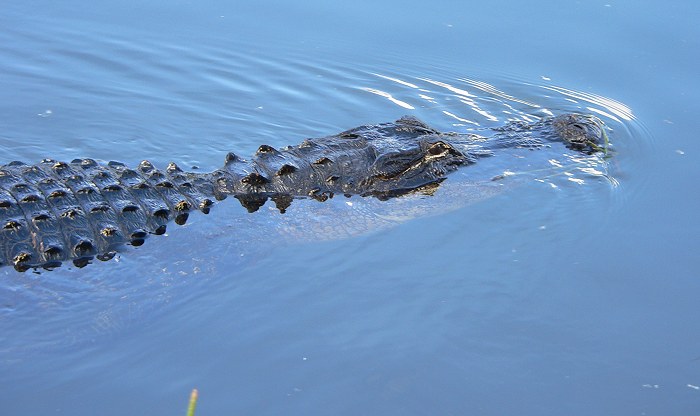
more alligators – we saw at least 25 or 30 alligators on this walk.
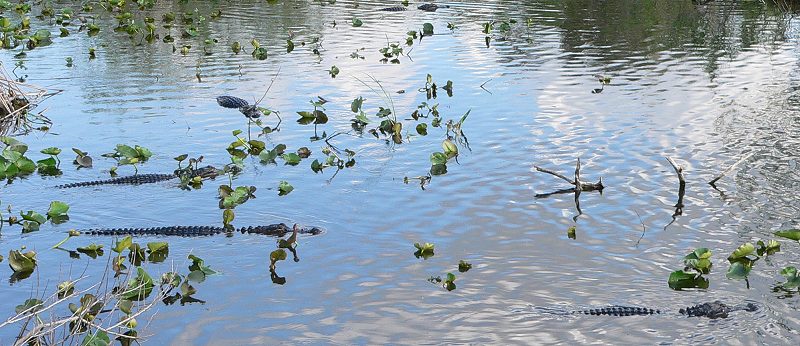
Anhinga sitting on a nest

Anhinga with young

Anhinga drying its wings. Anhingas don’t have oil on their feathers, so after they’ve been swimming under water they need to sit in the sun and dry out.

Double-crested Cormorant

another Cormorant
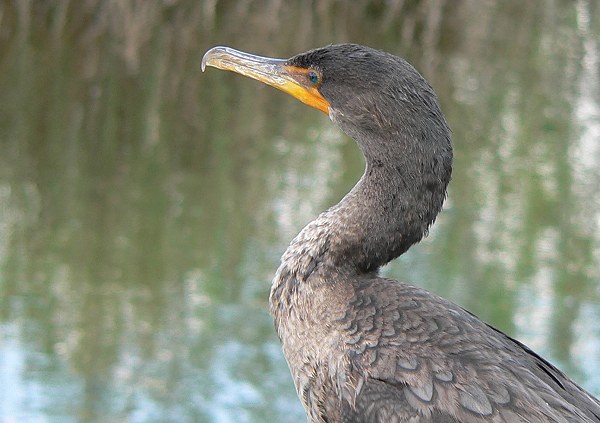
and another
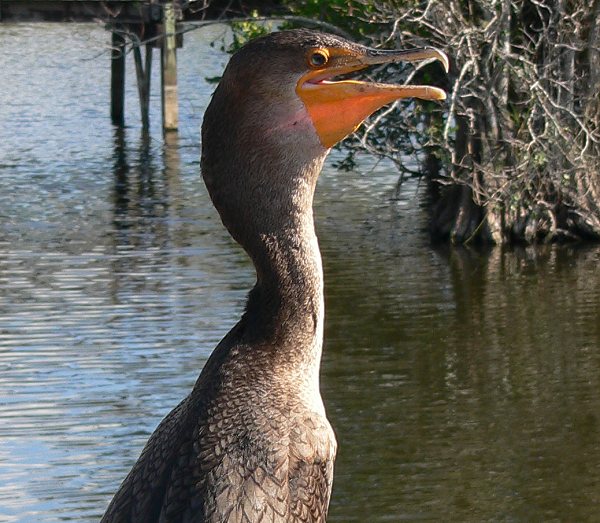
And more cormorants

Fish under the water – the food supply for most of the birds and the alligators.
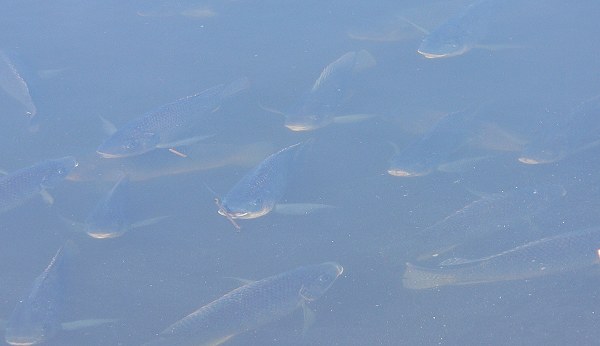
Green-backed Heron

Wood Stork

We took a tour boat ride from the marina at Flamingo, out into some of the marine estuaries. This is the boat – the guy with the ponytail was our guide.

He was very knowledgeable and enthusiastic, and also a terrific photographer.
The first part of the trip was along a canal lined with mangroves. We went very slowly and quietly and saw lots of wildlife.
American Crocodiles – crocodiles have thinner, sharper noses than alligators, and are lighter in color.
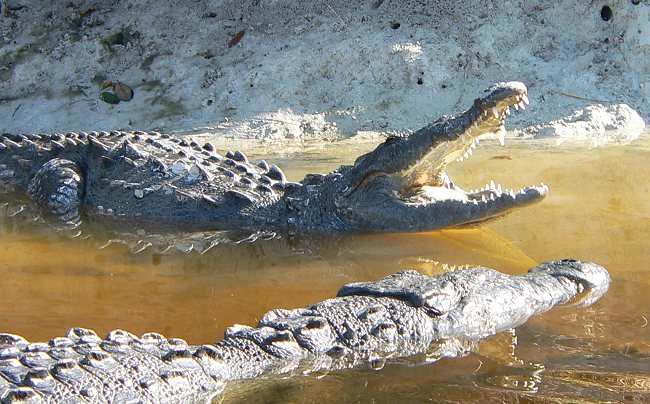
Snake – I haven’t figured out what kind
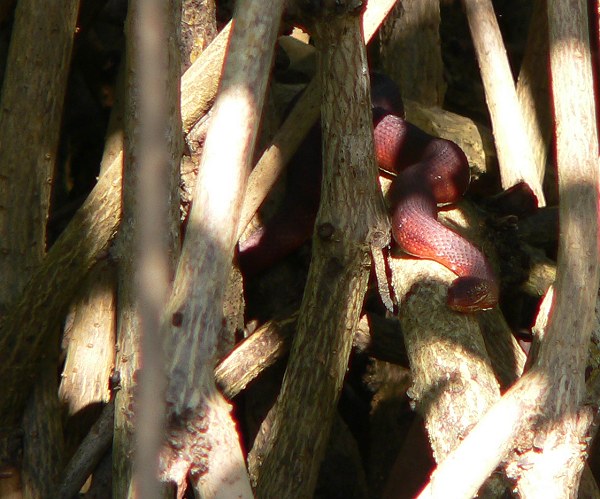
Then we got to the natural estuaries, which are wider and less quiet.
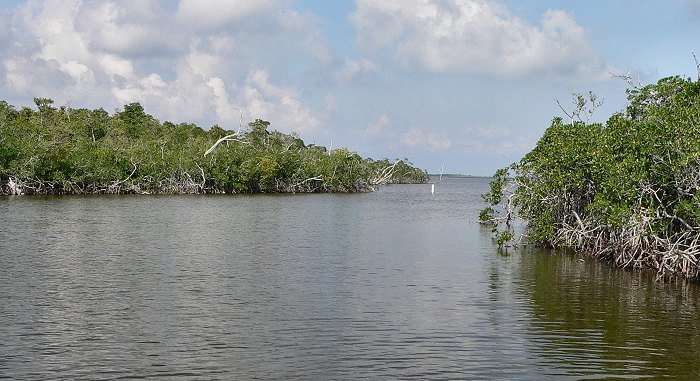
The park folks were making an effort to keep the gulls off the docks – they had put fake owls on some of the dock posts. It didn’t appear to affect the gulls at all.
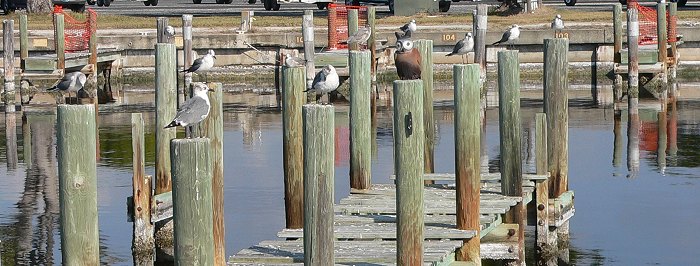
One interesting walk we took was to see the meadows and mangrove clumps along the edge of the ocean. The meadows are very flat, and covered with a dense growth of salt-tolerant plants. It’s clear that the ocean water inundates these areas during big storms.

This is a very small butterfly that lives only in salt marsh tidal flats along the coast of the southern and southeastern U.S. It’s an Eastern Pygmy-Blue. I tried hard to get a good photo, but it’s so small that my camera had trouble focussing on the right place.

This is a Hammock skipper – in the U.S. it lives only at the very southern tip of Florida.

Here are some of the mangrove clumps along the shore.

This is a Great Southern White – we saw lots of these butterflies. The thickened ends of their antennae are phophorescent blue.
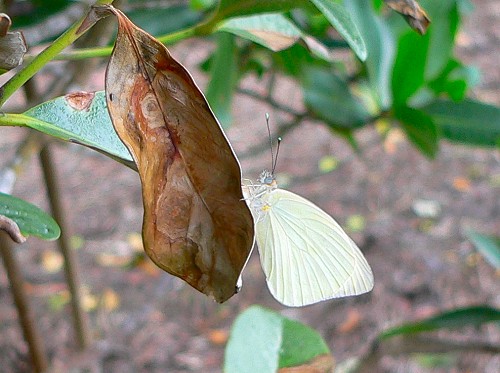
Lizards scurry into hiding in the piles of sticks and debris that we saw along the edges of the meadows.
We visited a hardwood Hammock called Mahogany Hammock – a place where the land is slightly elevated allowing trees and brush to grow. This hammock had huge old Mahogany and Live Oak trees that made a dense thicket and provided habitat for epiphytes and ferns.
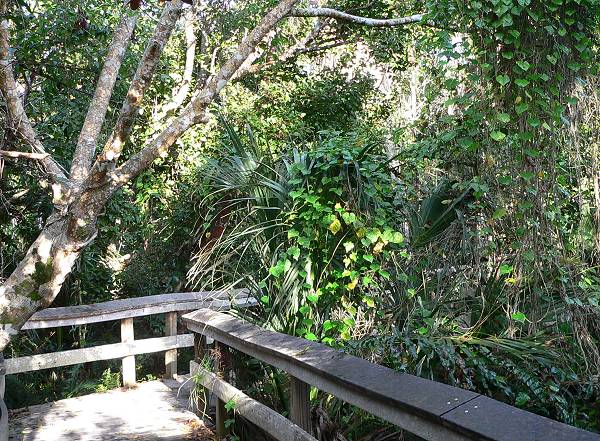
Epiphytes
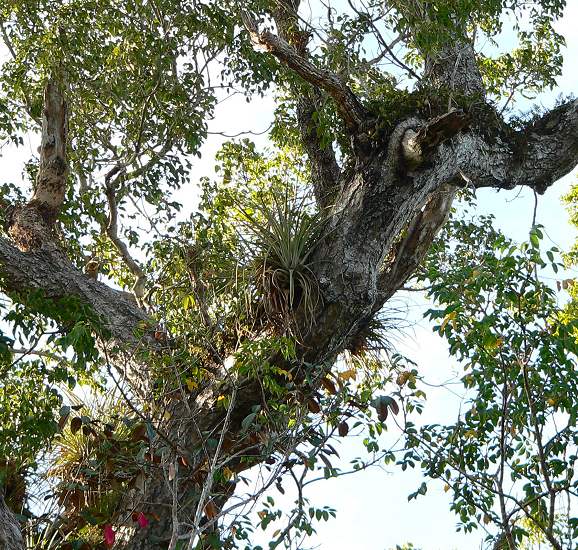
Epiphytes – Bromeliads – on a Mahogany tree

Mike with a huge, old Mahogany tree
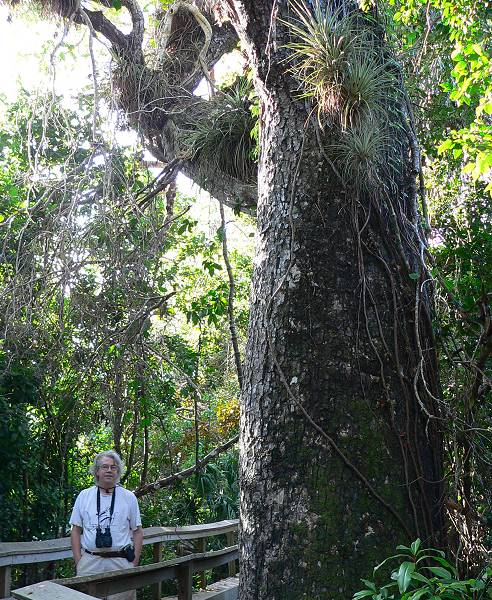
Ferns on a fallen trunk

Palms
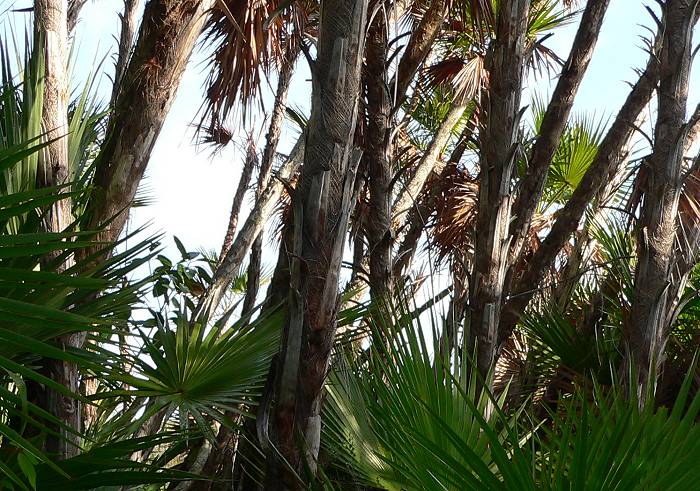
A Brown Anole – I’m not sure if this is a Green Anole that’s being brown (they can change color), or one of the non-native Cuban Anoles.
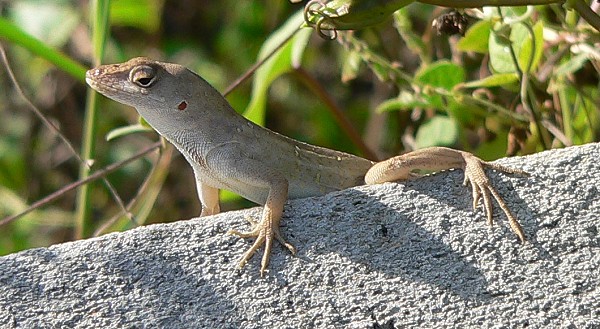
And a Green Anole (Anolis carolinensis carolinensis) – the only anole native to Florida – not a very good photo because it was very good at slithering around the trunk just as I was taking the photo.

This is the surrounding area, with other hammocks looking like islands in the distance.
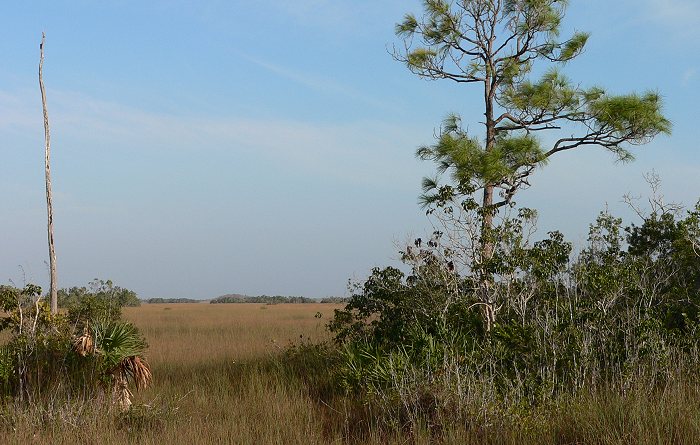
The central area of the everglades is a huge freshwater prairie/slough. Water moves through it very slowly. It’s dominated by grasses and sedges, and dotted with hammocks and cypresses. It looked to me like photos I’ve seen of African savannas.
This is a view of the slough with cypress trees and a Red-shouldered Hawk at the top of the tallest cypress.

Another view of the slough with Pines and Saw Palmetto

A small native Lobelia that was growing in the slough – Coastal Plain Lobelia (Lobelia glandulosa)
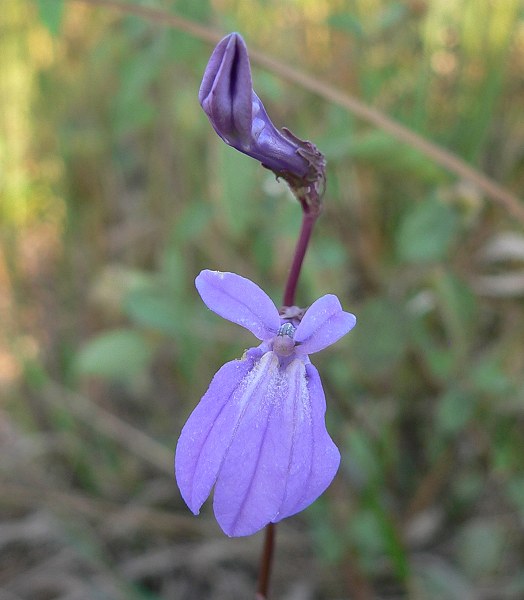
A pair of mating Barred Yellows
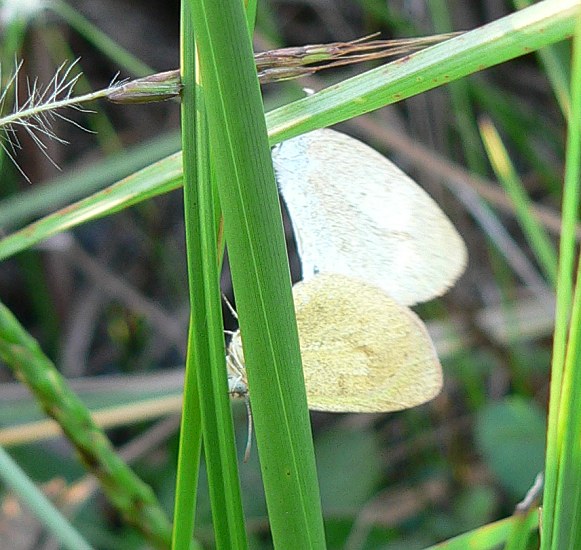
This is the Eco Pond. It’s a man-made pond that used to get cleaned, used wastewater from the sewage treatment system at Flamingo. The lodge and pond were heavily damaged in Hurricane Wilma in 2005 and now the water there is brackish rather than fresh, so there aren’t as many birds as there used to be. But there are still birds and butterflies, and it’s a nice place to walk close to the campground.
The pond with a flock of mostly Snowy Egrets
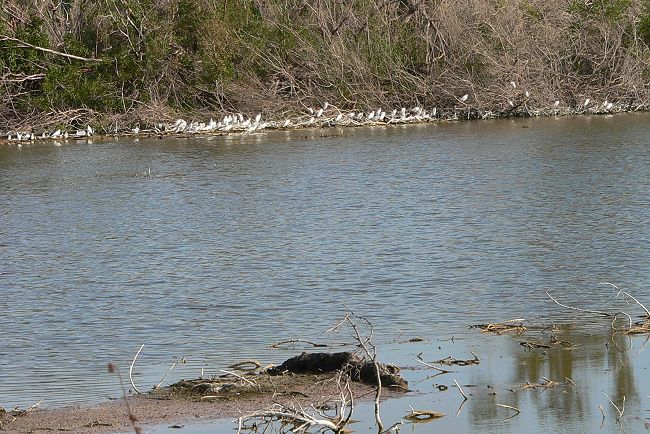
Some other creatures I found at the pond.
Cuban Brown Anole (Anolis sagrei sagrei) not native
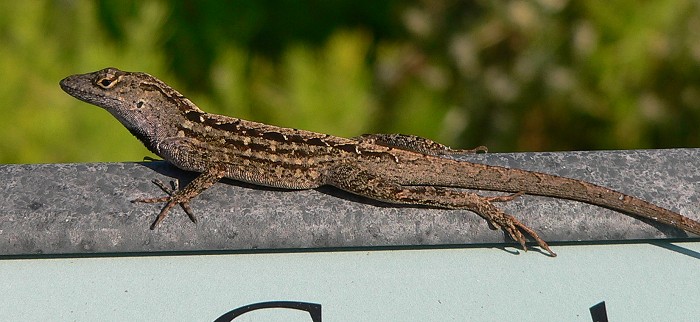
Ceraunus Blue Butterfly
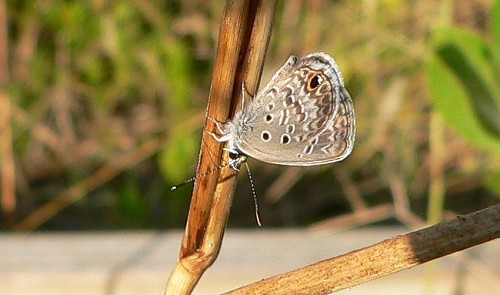
Gulf Fritillary
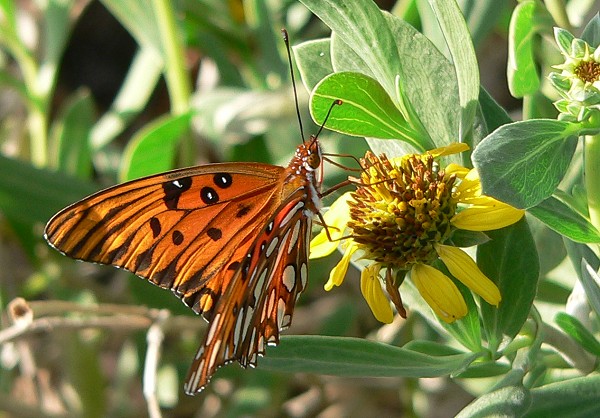
another Gulf Fritillary
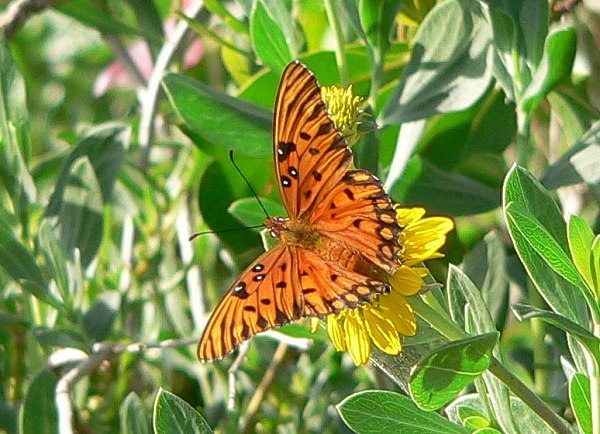
Spider with its web
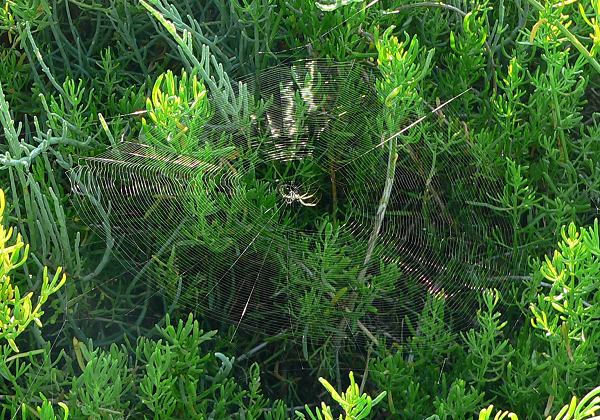
Wood Stork
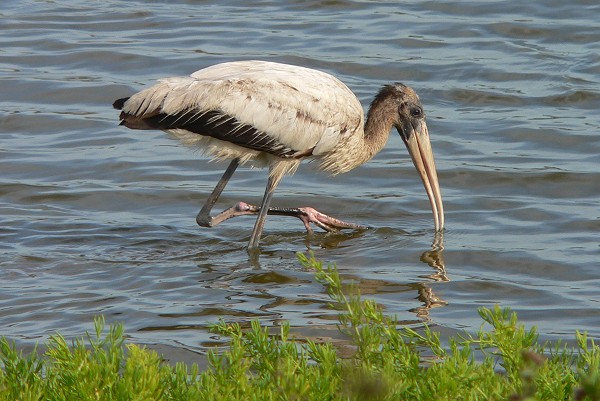
There are at least 3 huge Osprey nests near the marina in Flamingo. This one is on top of a manmade structure – I don’t know exactly what it is. There’s another one on a radio tower, and another in a dead tree.
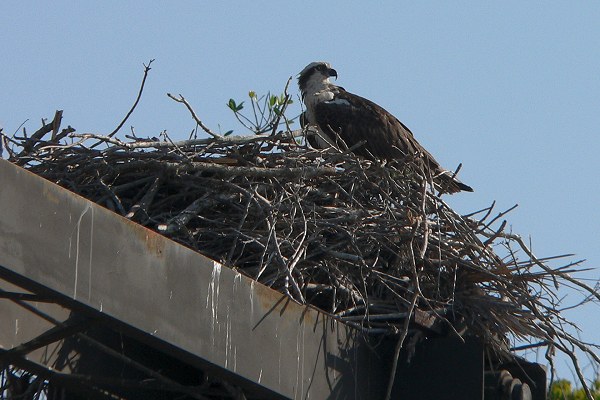
Even the campground had interesting birds and butterflies. We saw Red-shouldered Hawks sitting in the trees next to the campground, and butterflies fluttered over the mowed grass.
Ceraunus Blue

A tiny bright colored moth called a Coffee-loving Moth (Pyrausta tyralis) – it lays its eggs on wild coffee

A Fiery Skipper – a butterfly that I saw at the farm for the first time last summer. It lives in Florida all year around, but makes it as far north as Wisconsin sometimes in the late summer.
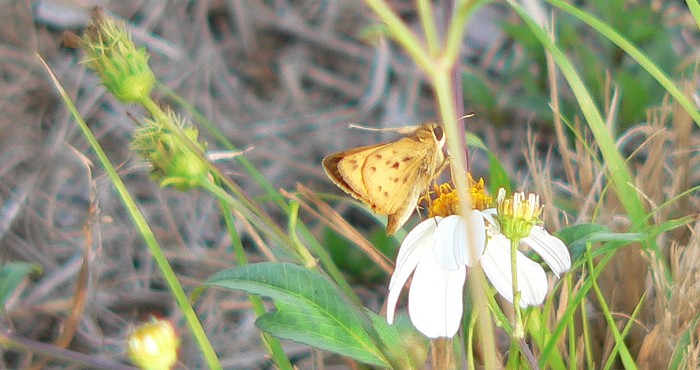
Great Southern White
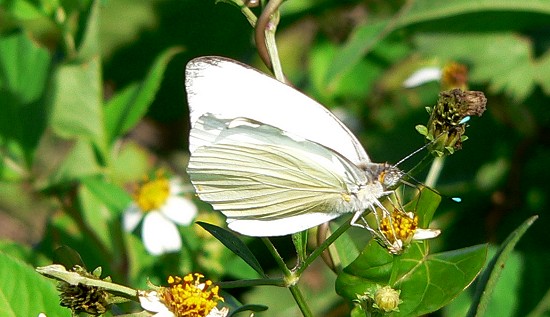
another Great Southern White

Morning Glory – (Ipomoea indica).


Our last walk in the Everglades was the Rowdy Bend Trail. It’s an overgrown road through coastal praire and woods. There are bromeliads and orchids in the trees, and lots of butterflies.
Here’s a bromeliad blooming in one of the trees
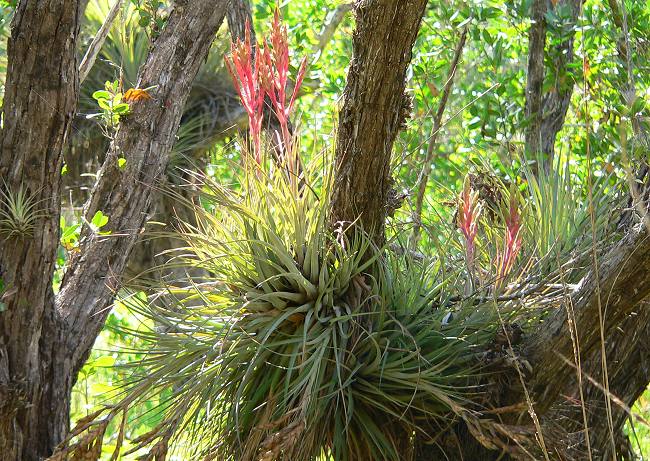
a closeup of the blossom

And this is the view at the end of the trail.

